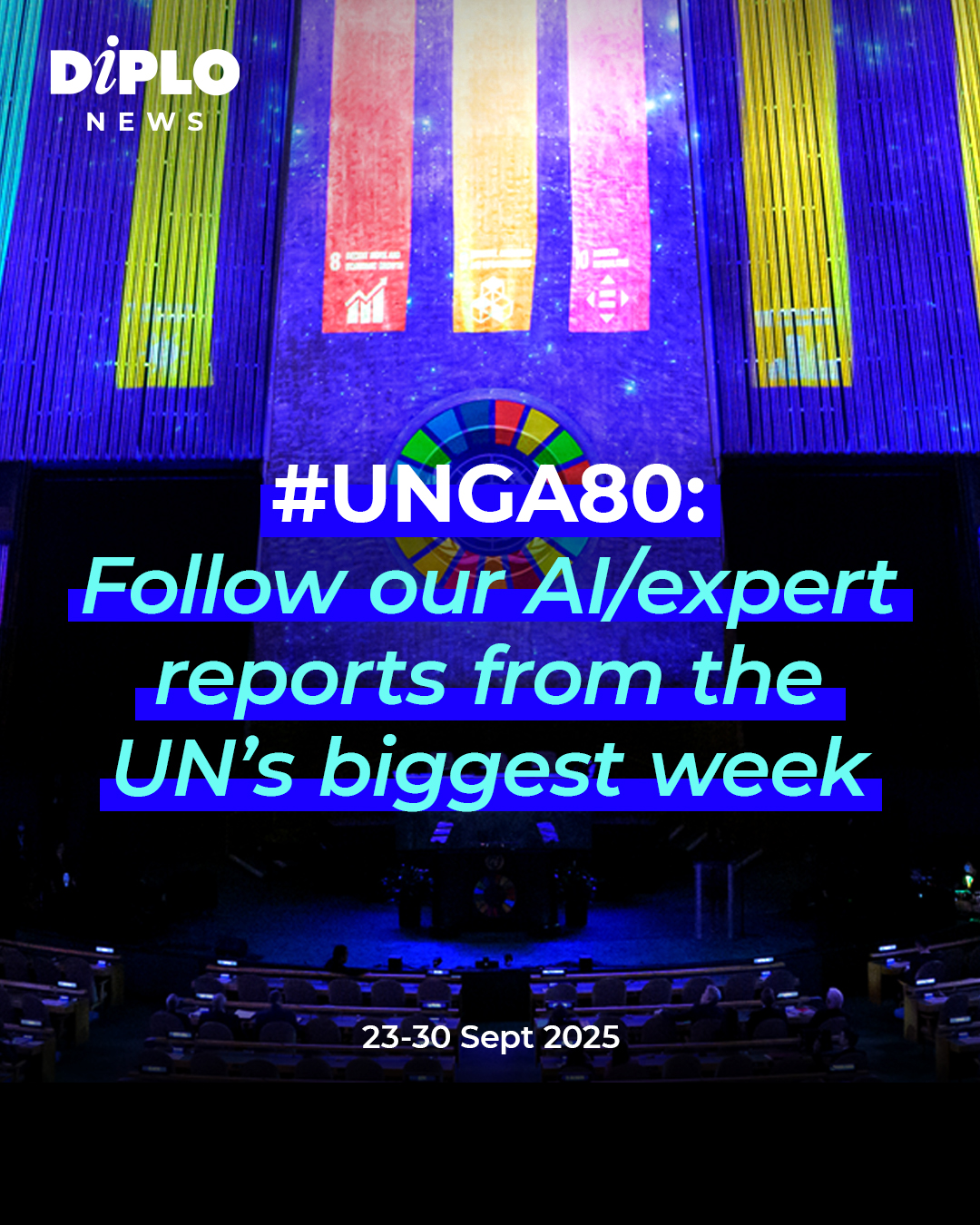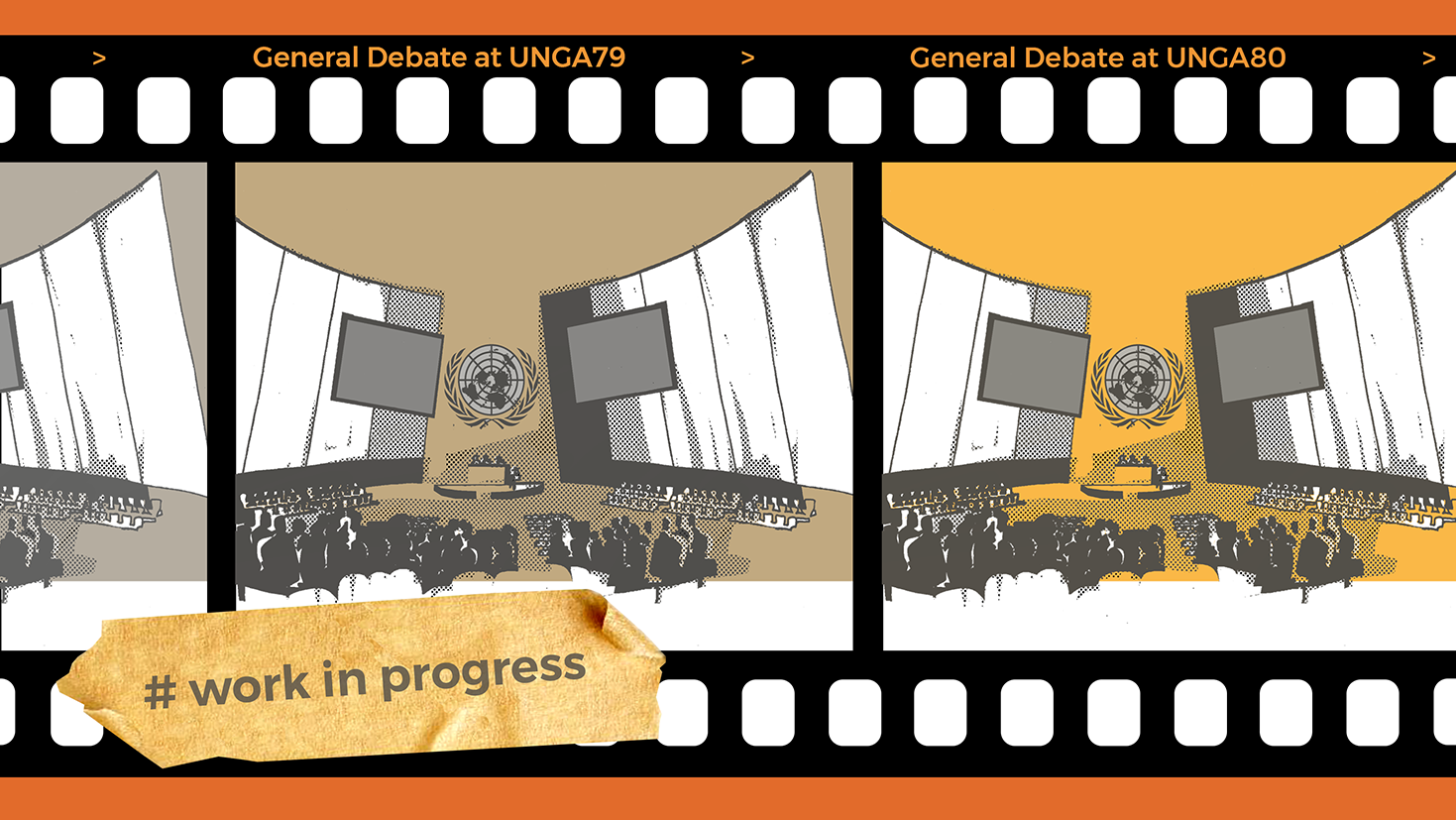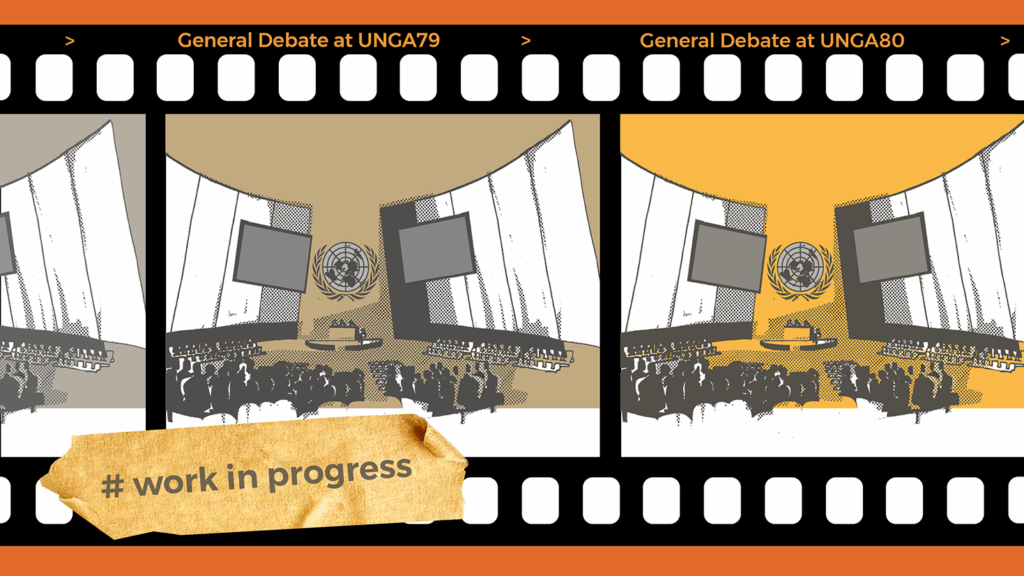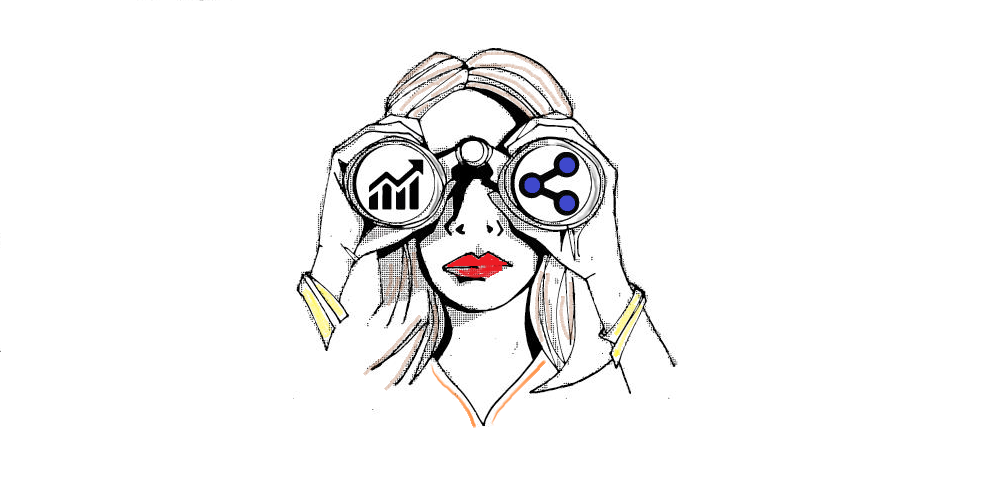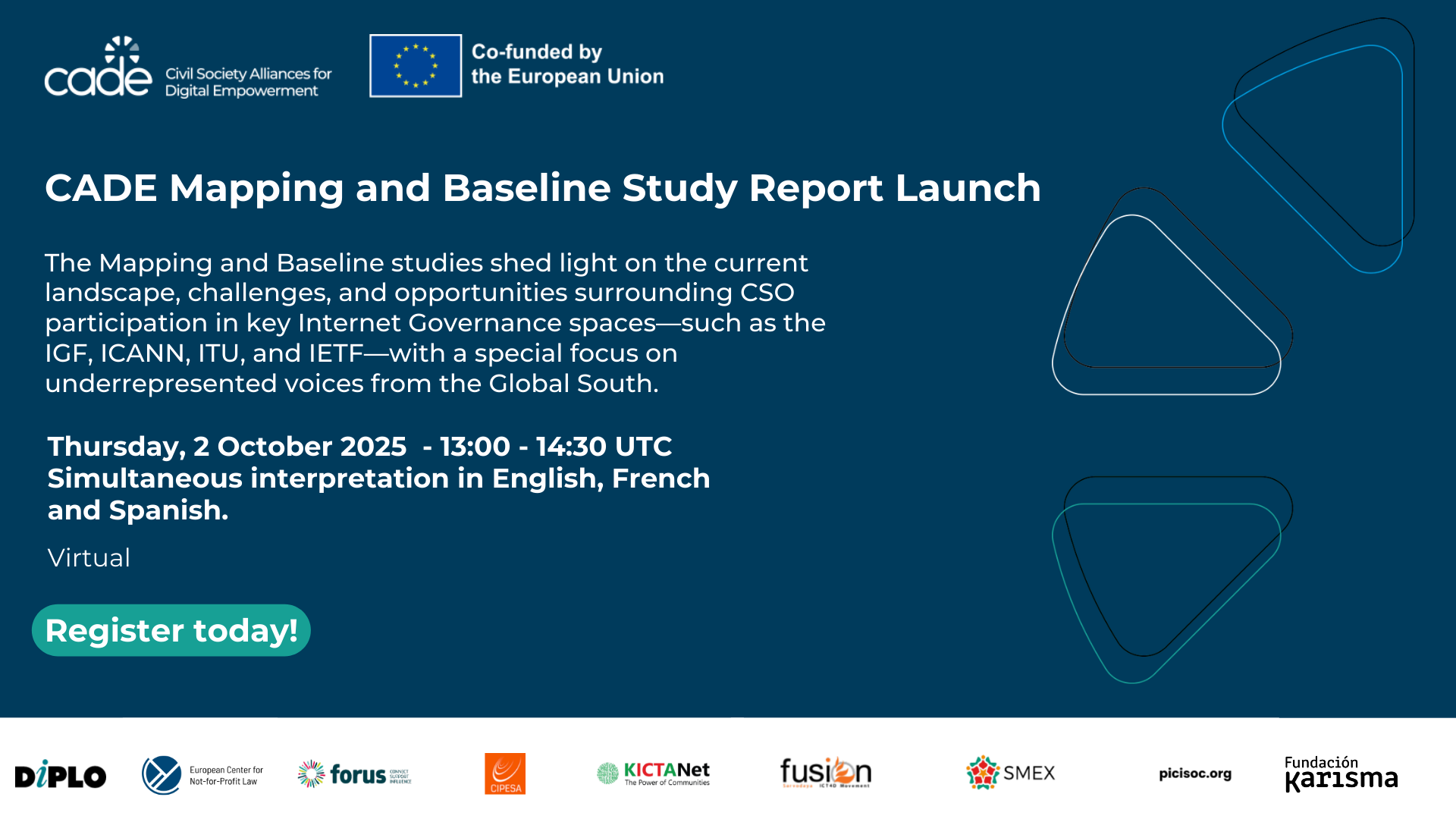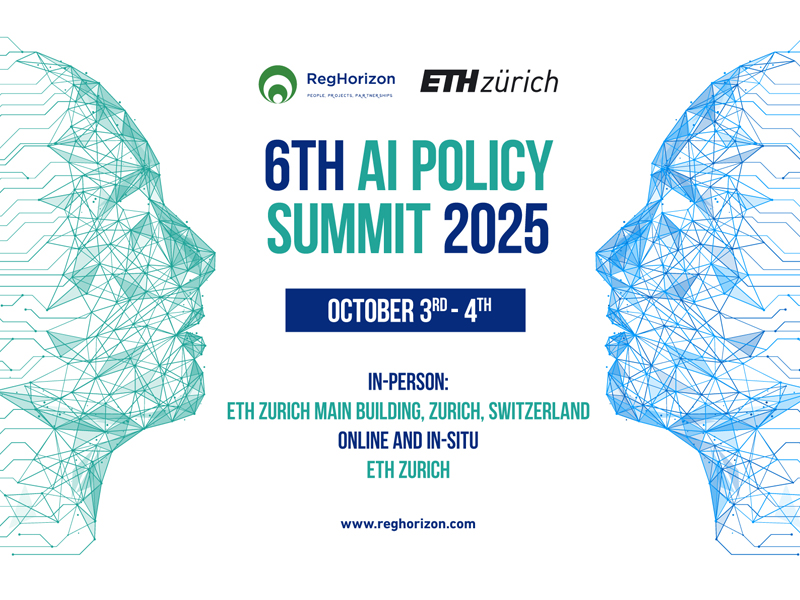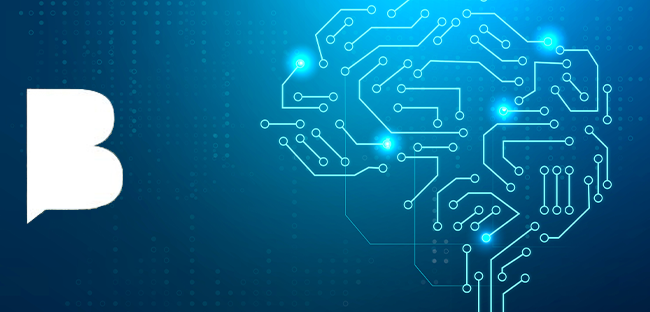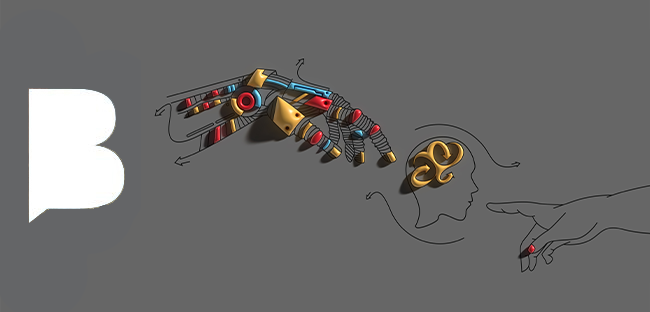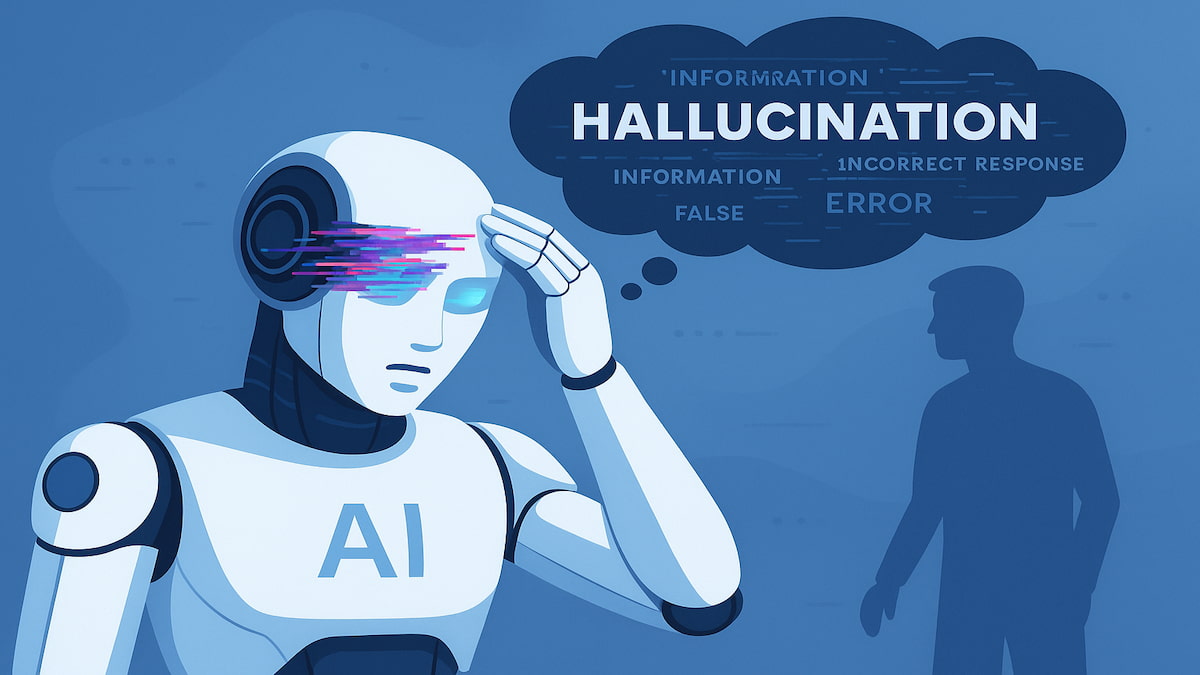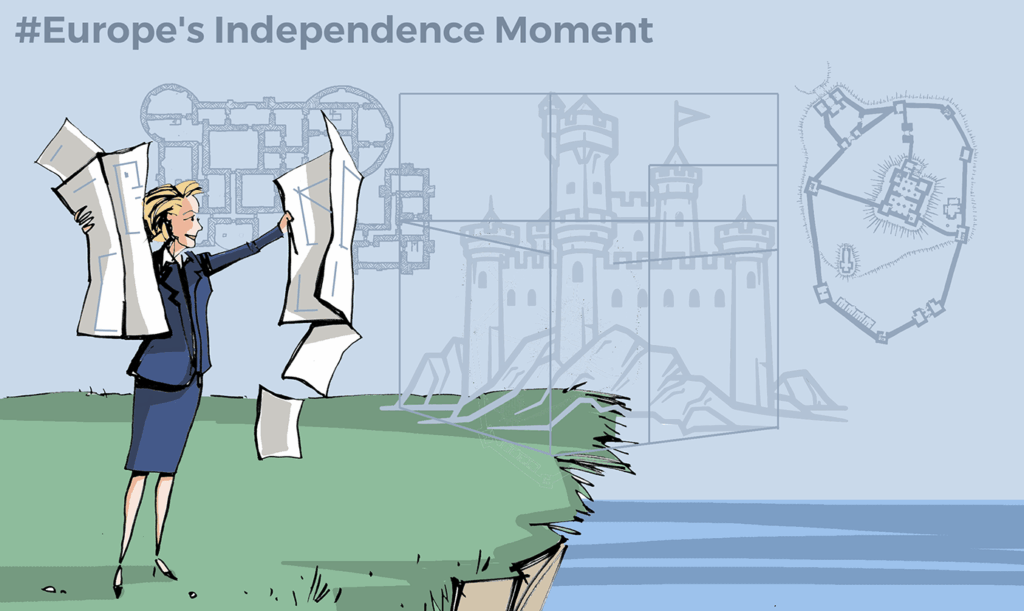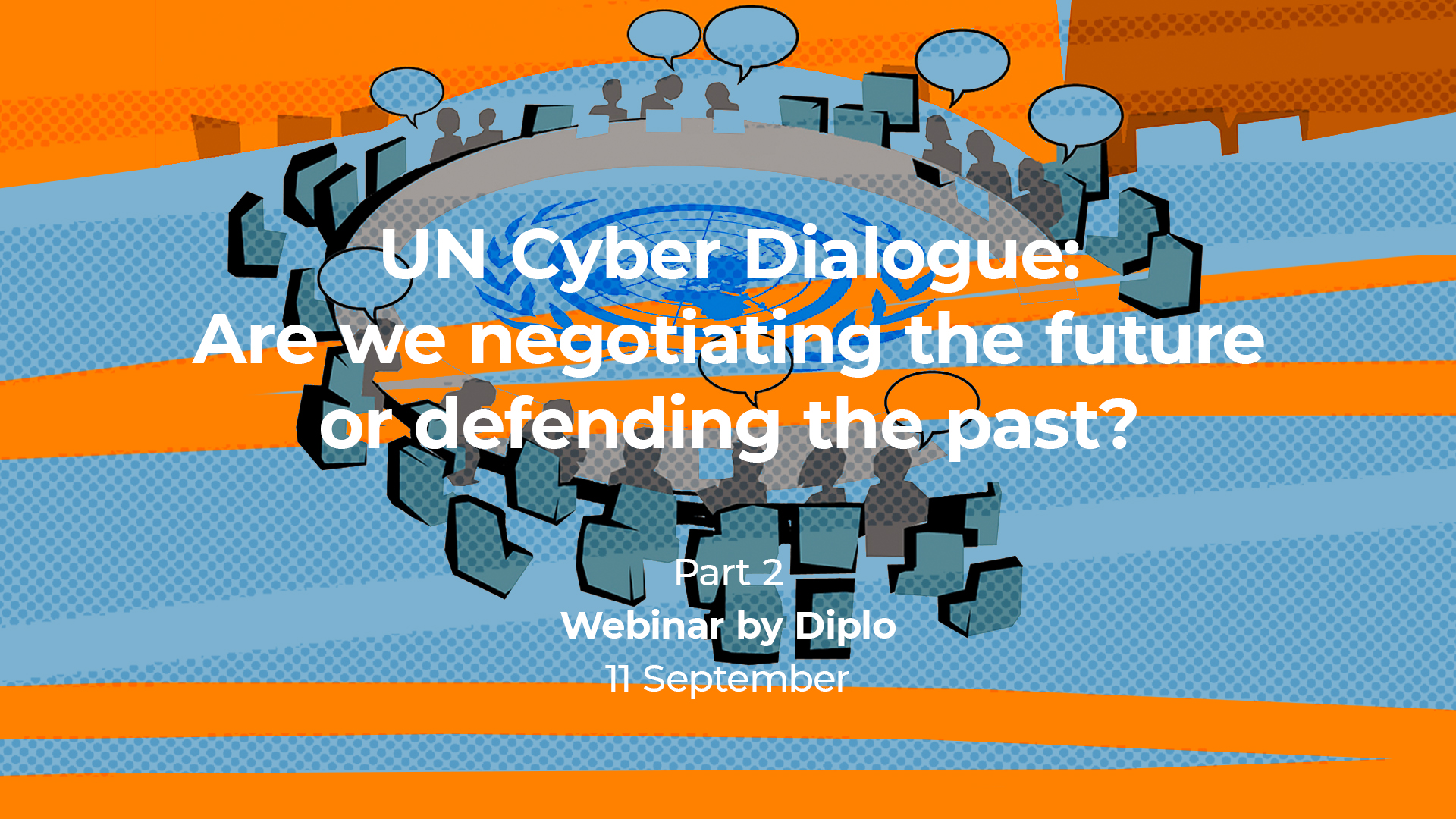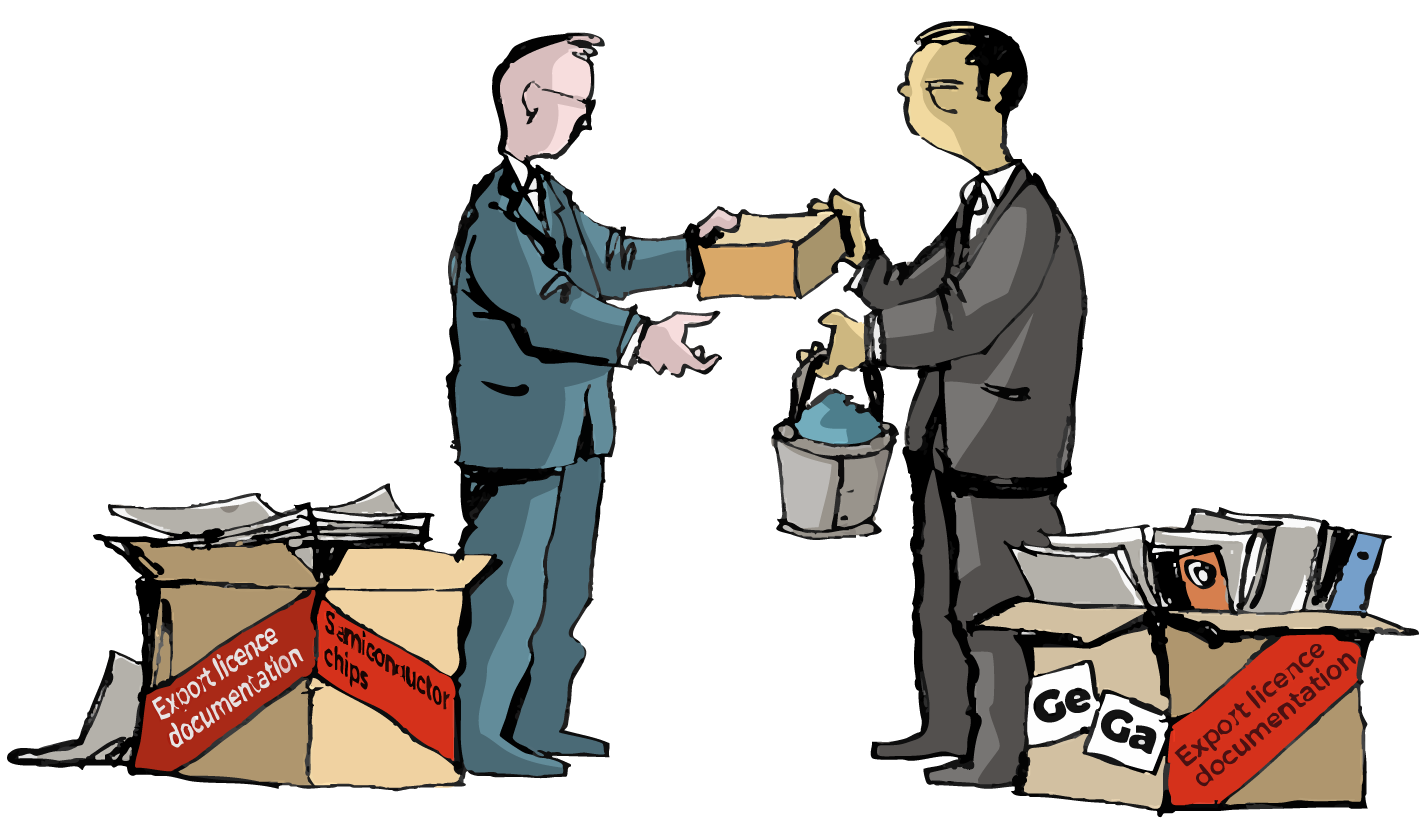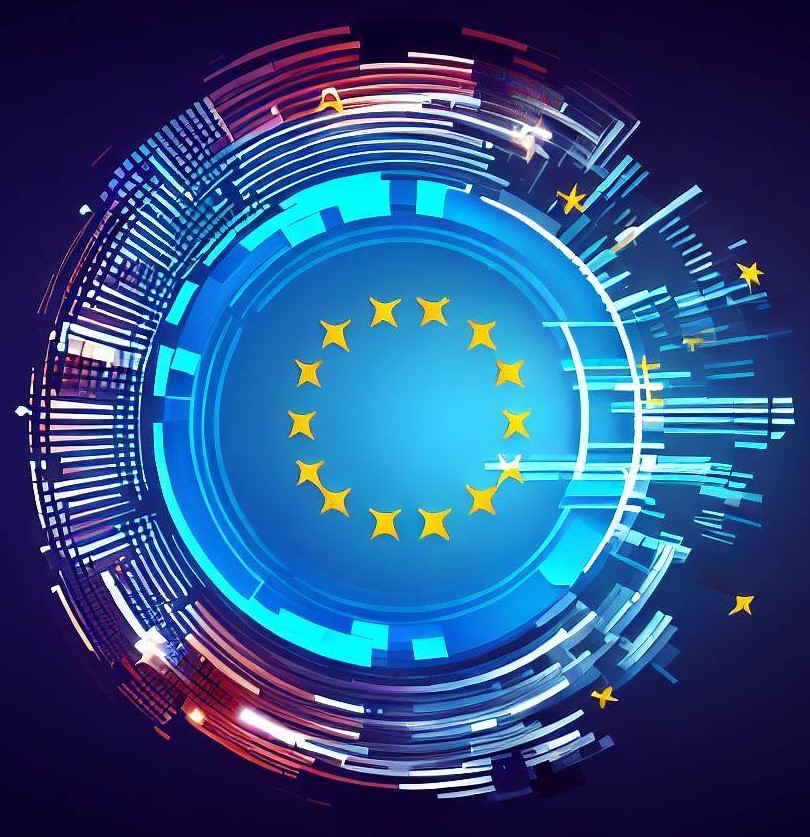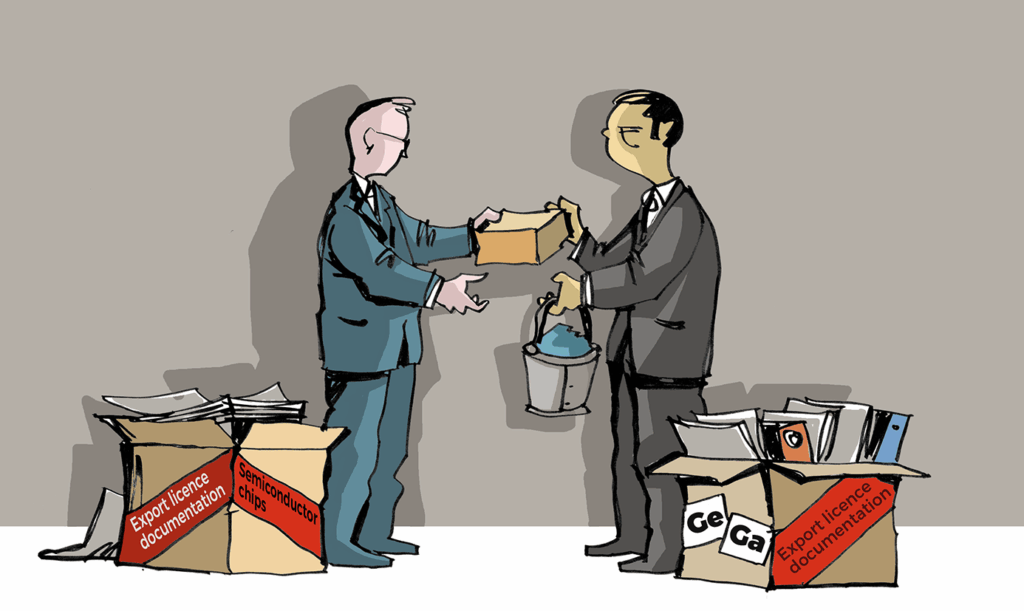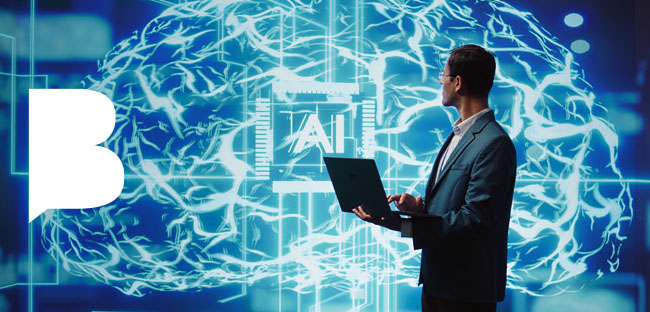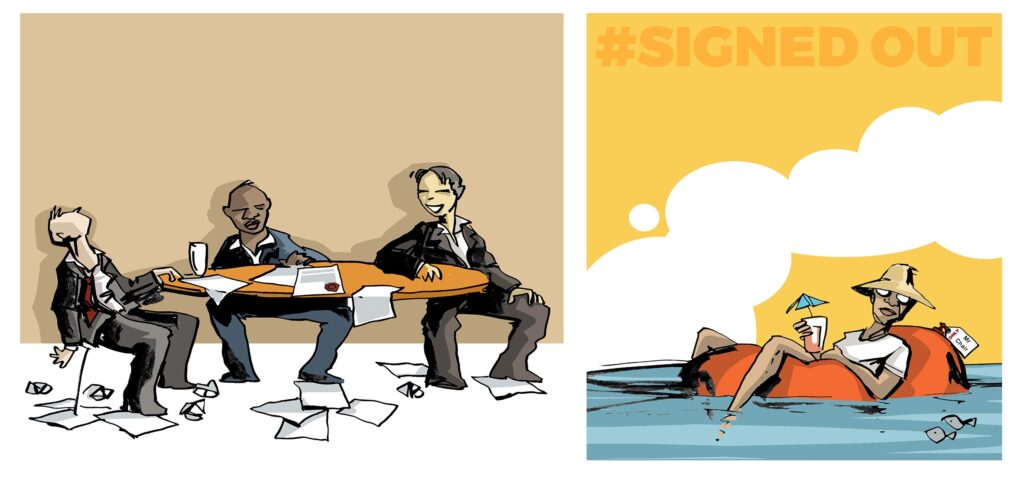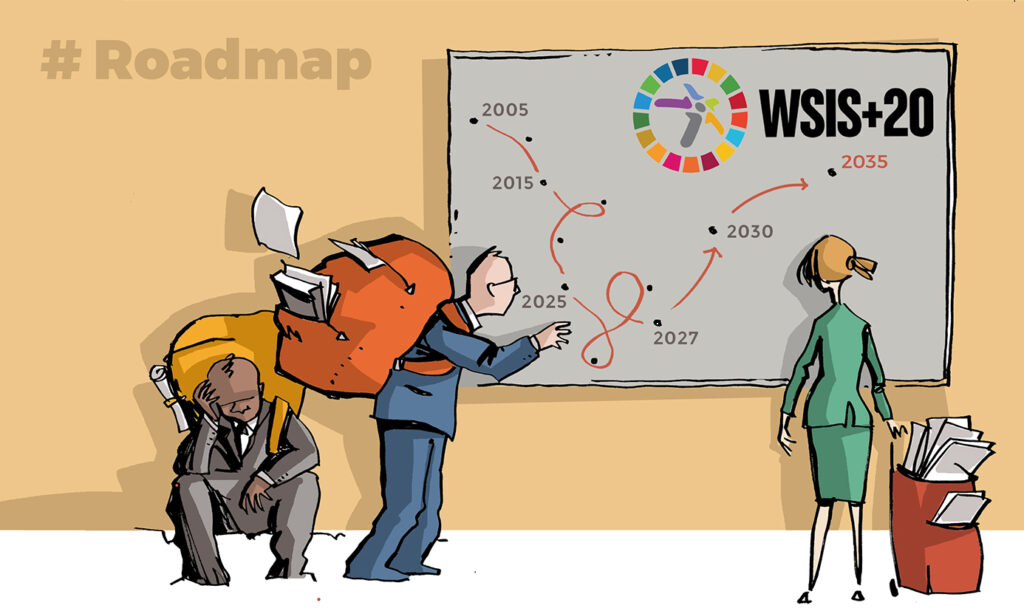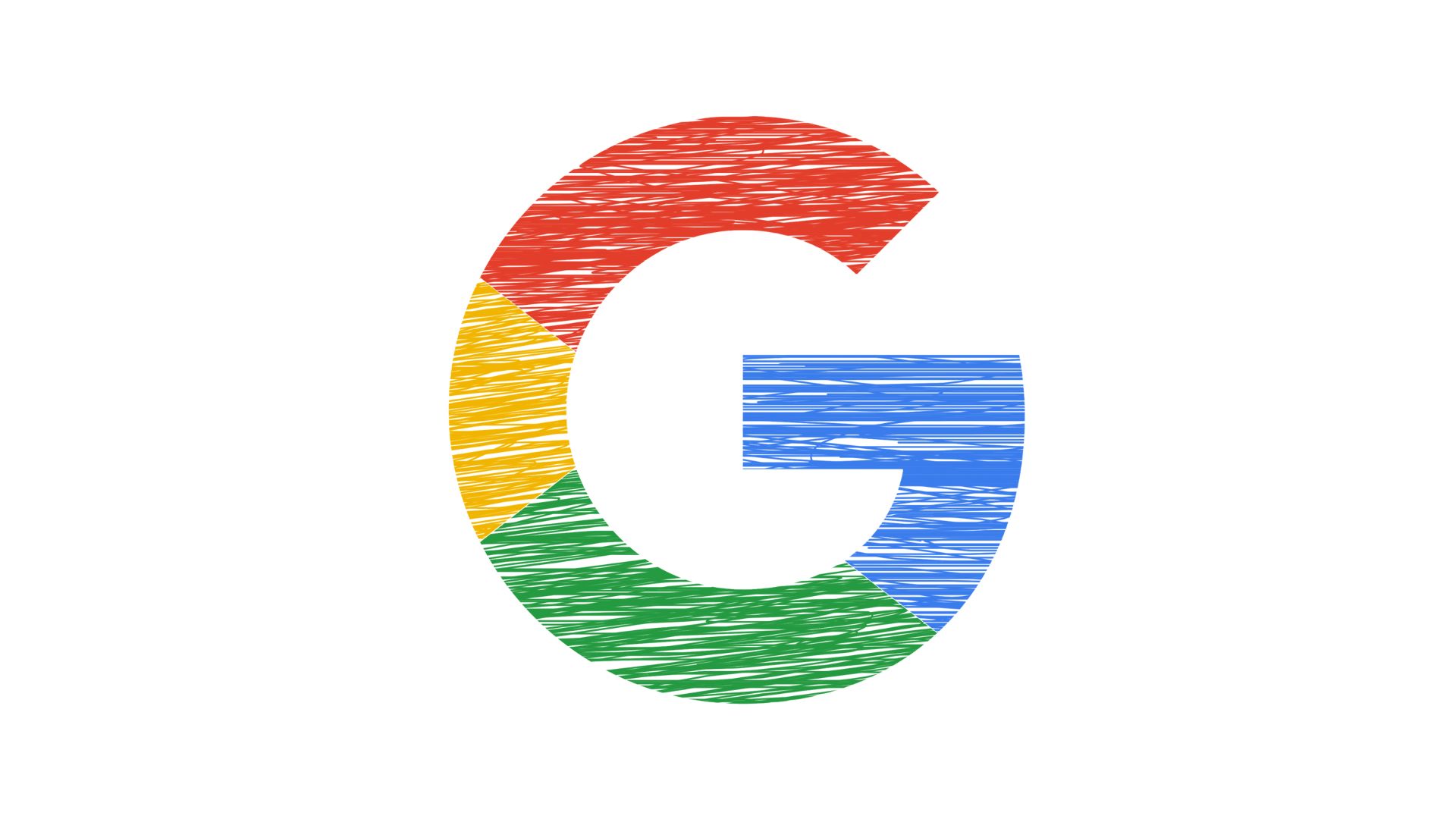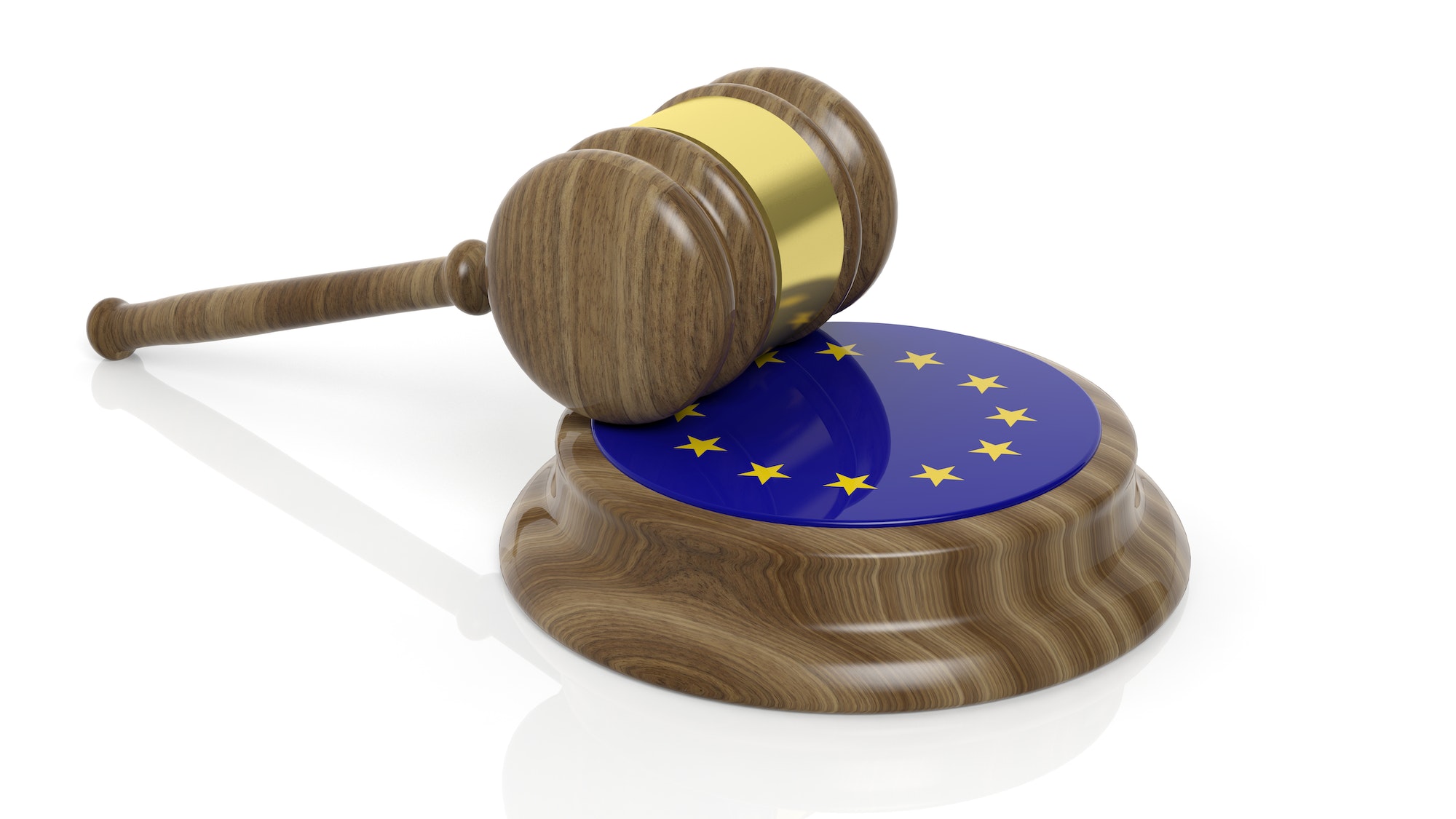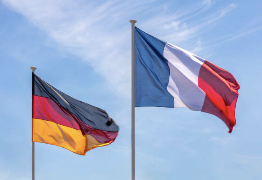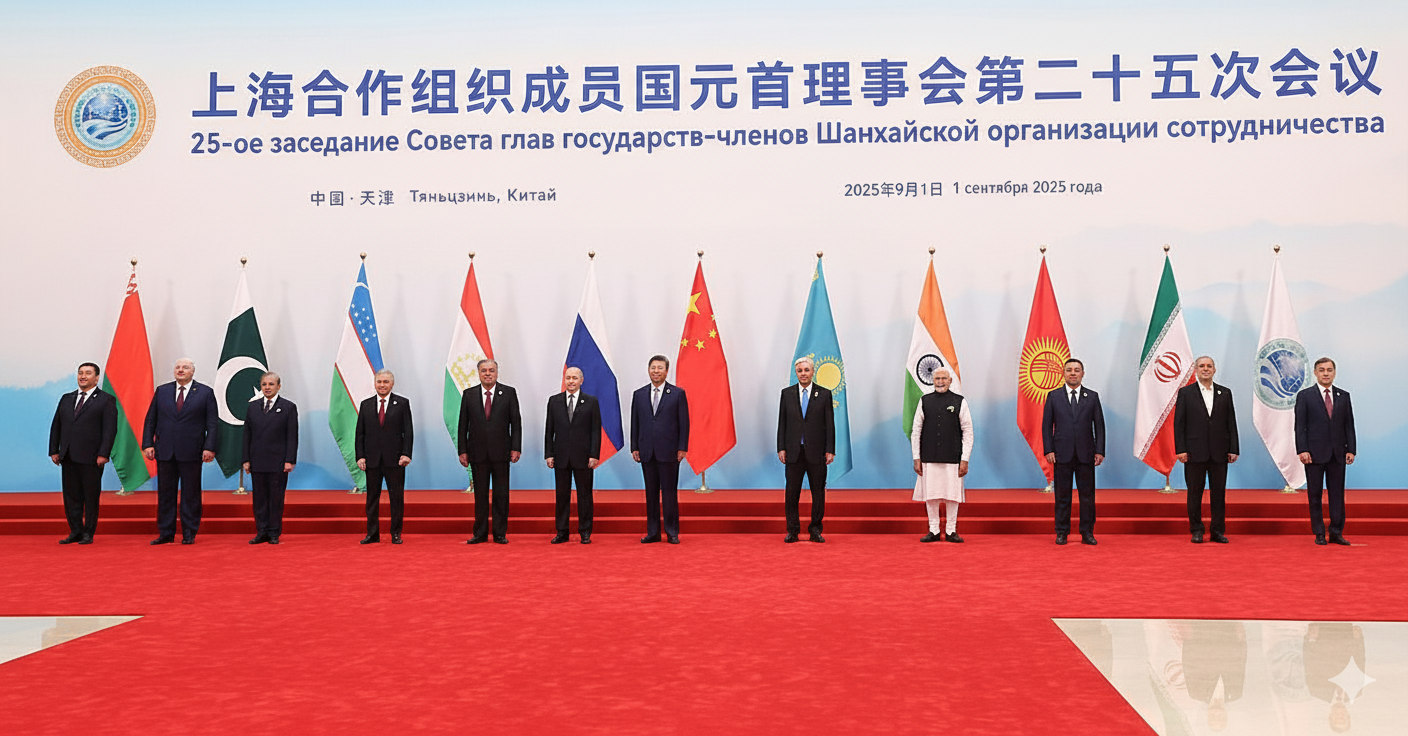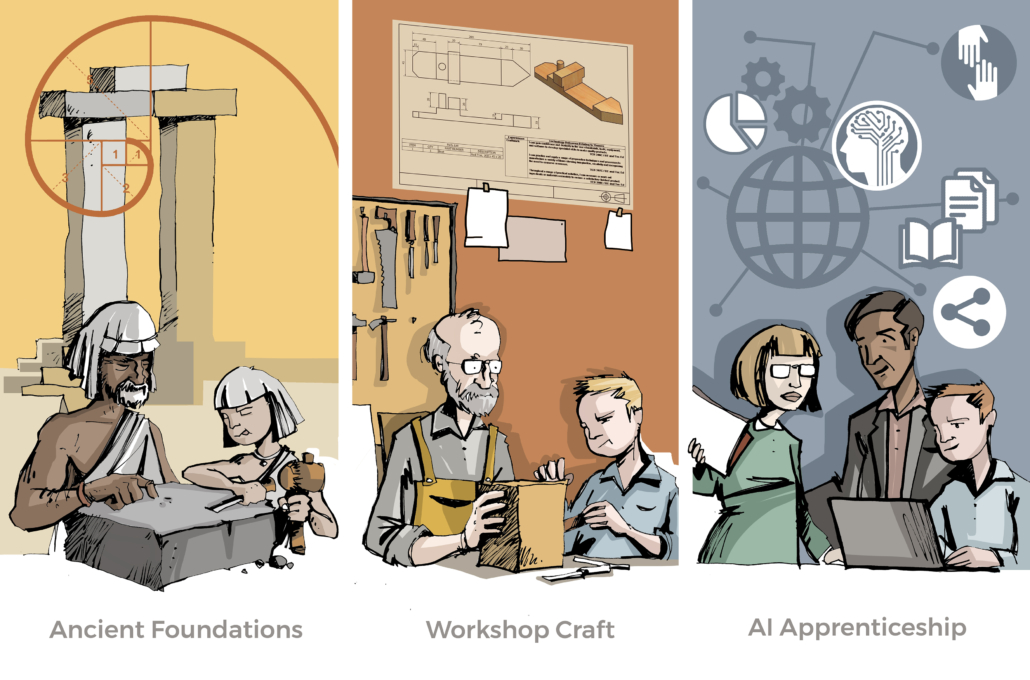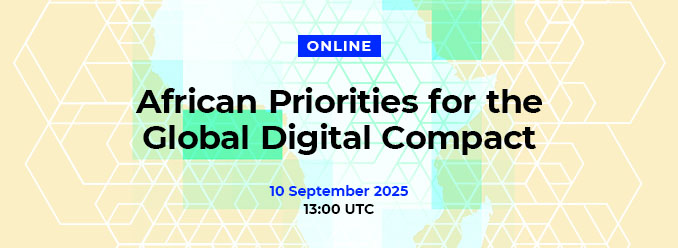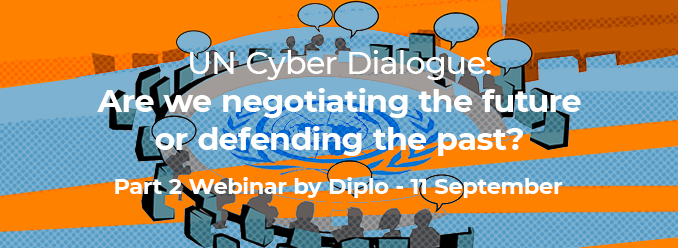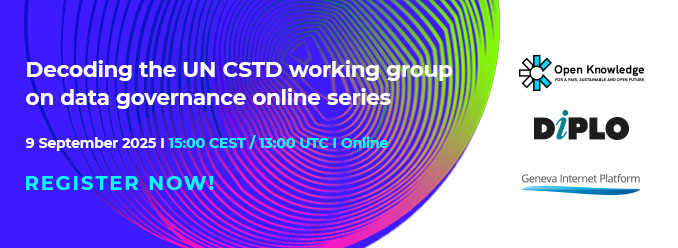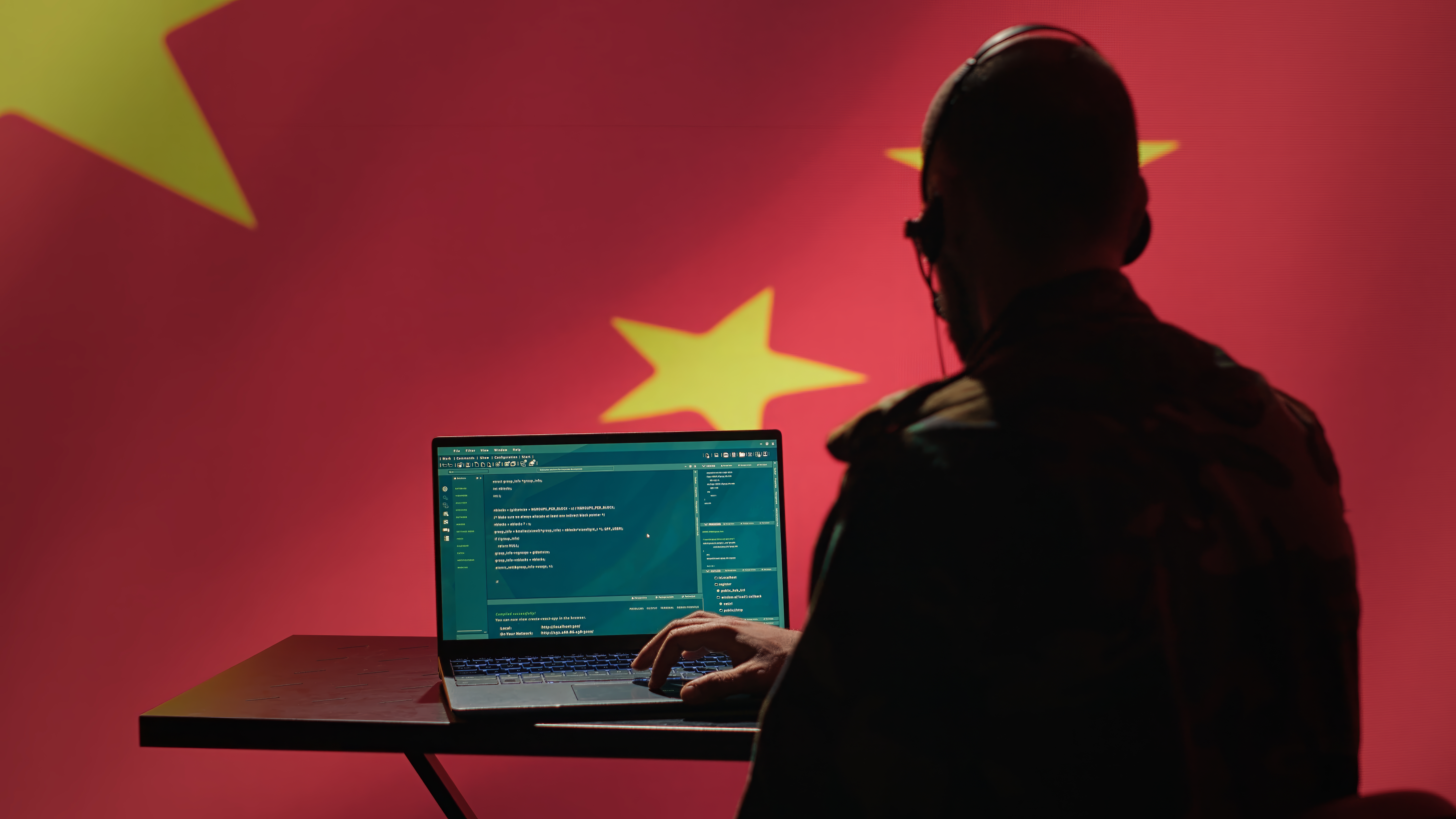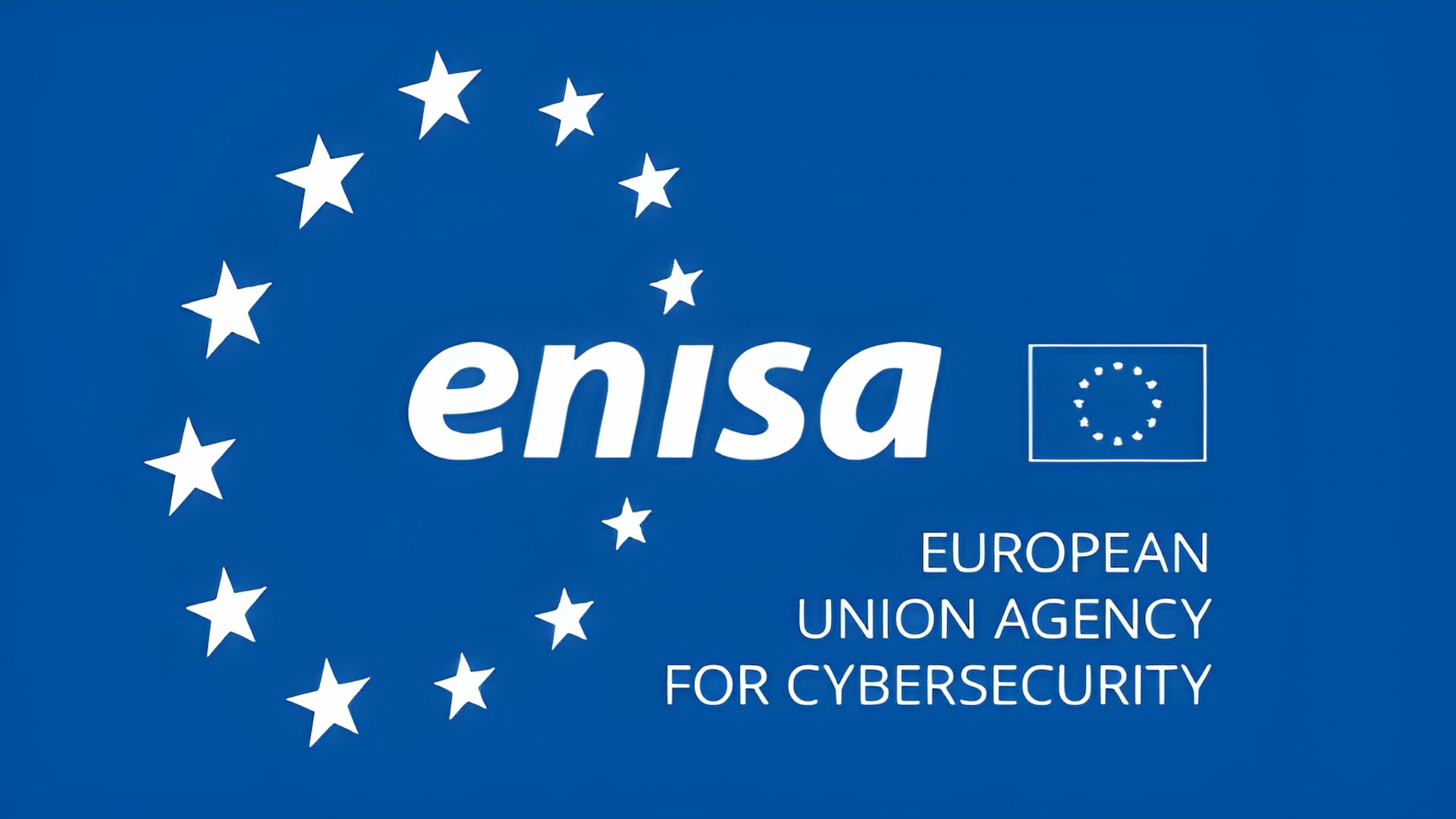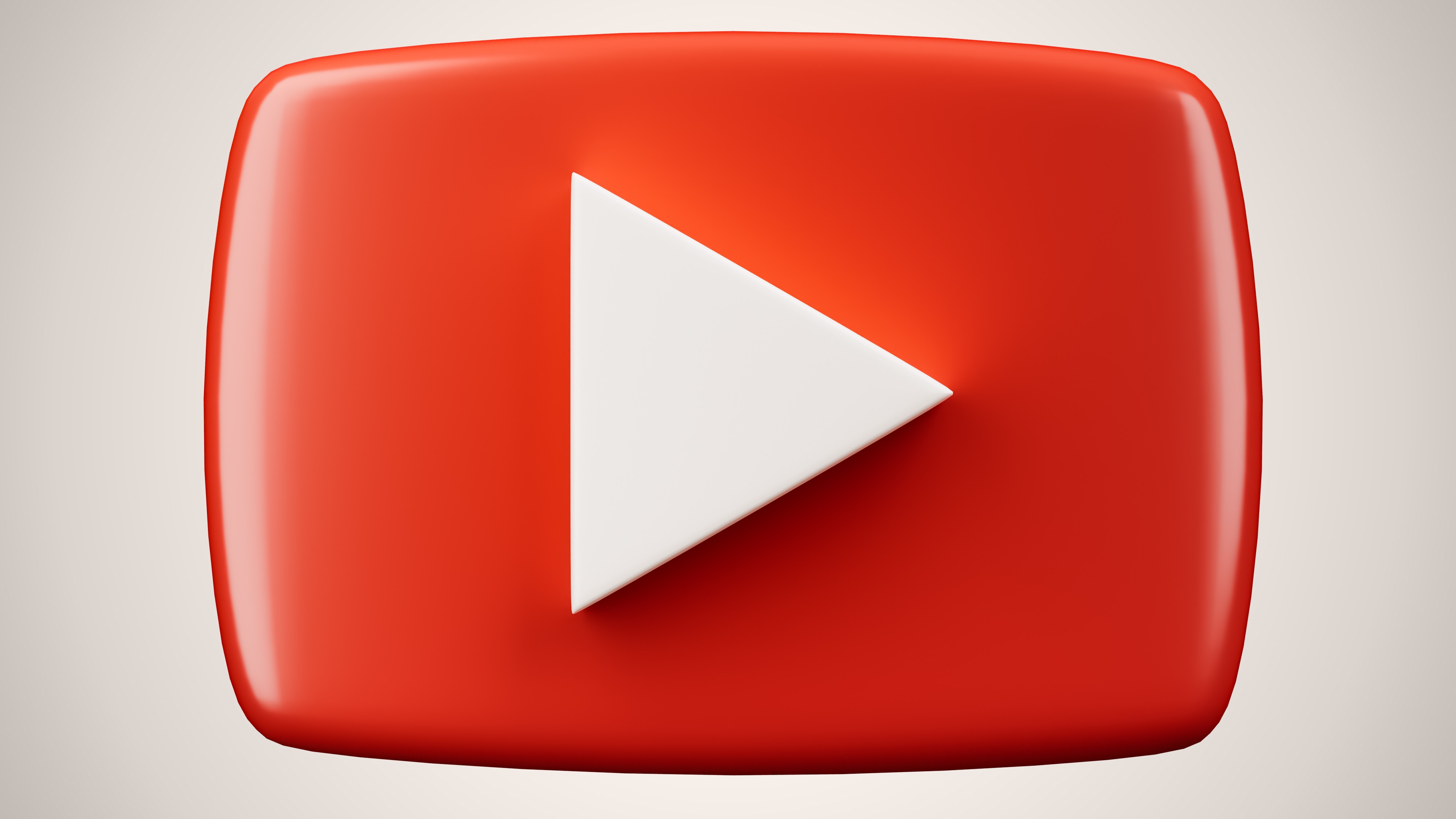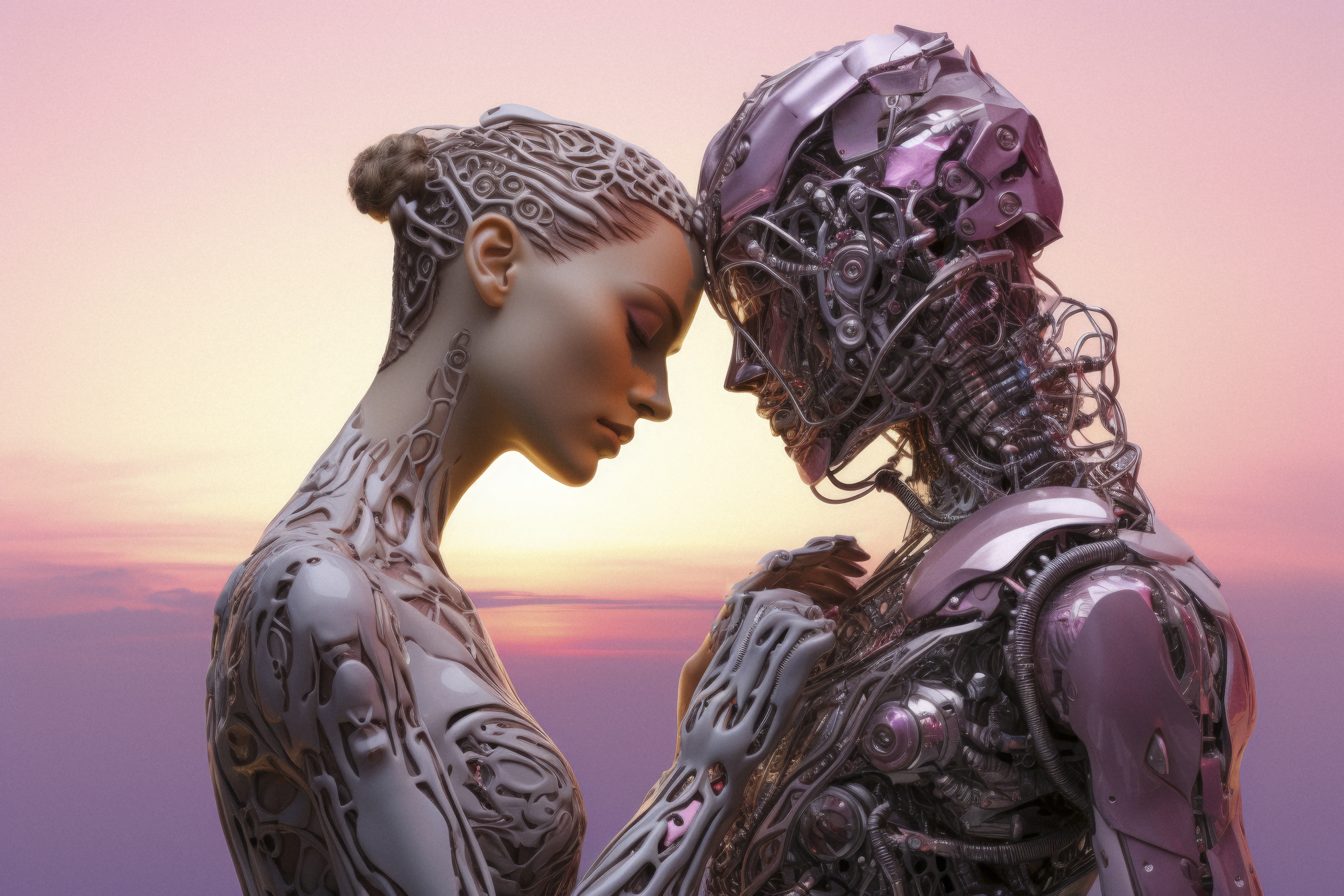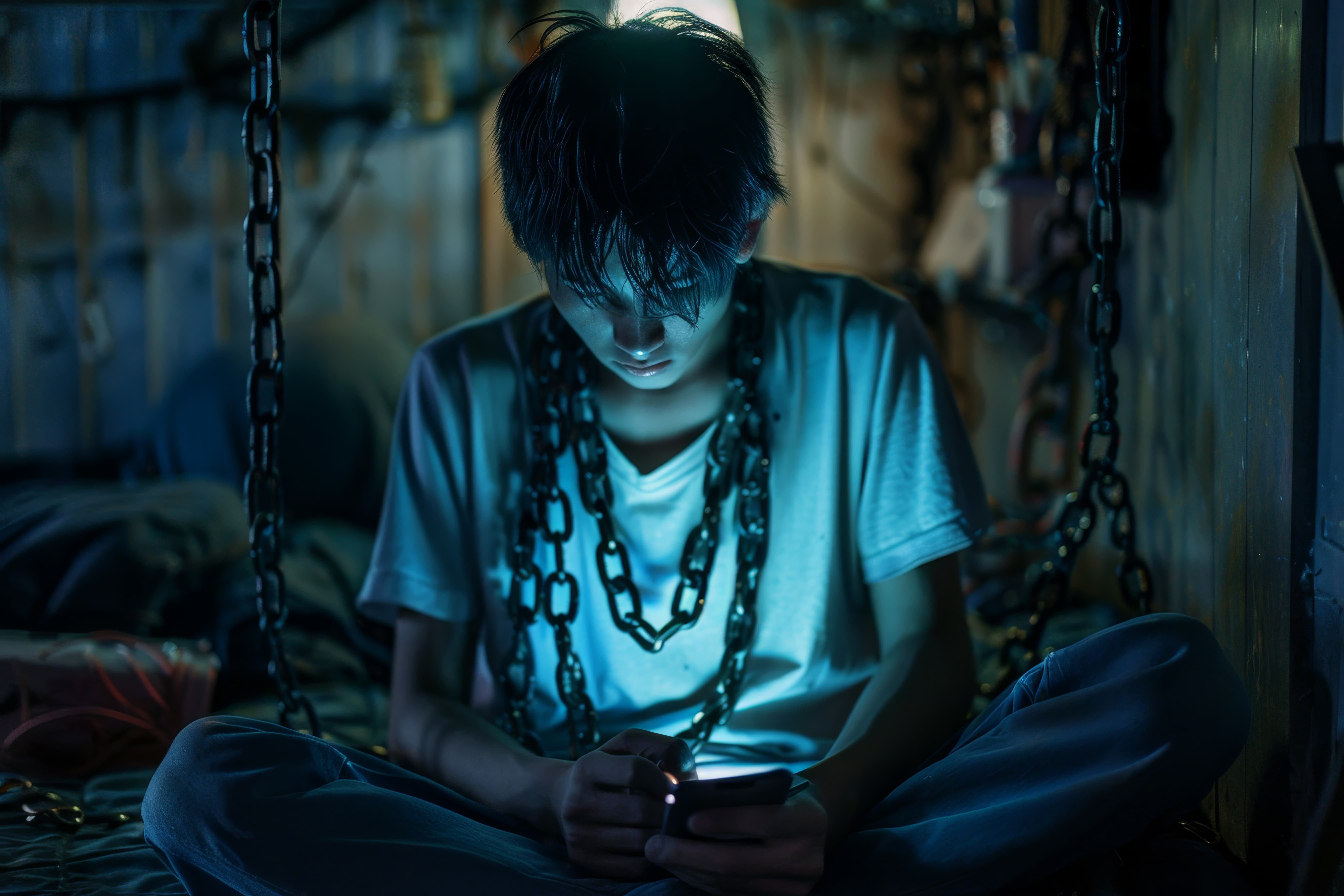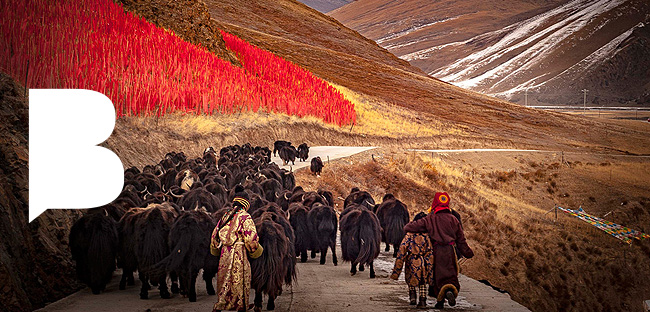
Welcome to the fourth daily report from the General Debate at the 80th session of the UN General Assembly (UNGA80). Our daily hybrid AI–human reports bring you a concise overview of how world leaders are framing the digital future.
On Day 4, artificial intelligence (AI) governance, digital cooperation, and the critical issue of child safety in the digital space stood out in the statements. Member states underlined that the transformative potential of AI for development – from the green energy transition to improved public services – is inextricably linked to the urgent need for global governance. Several leaders welcomed the new AI mechanisms established by UNGA, while others called for new frameworks to manage risks, particularly those related to cybercrime, disinformation, and the mental health of youth. A recurring theme was the need to actively address the digital divide through investments in digital infrastructure, skills, and technology transfer, stressing that the benefits of this new era must be shared fairly with all. The discussions reinforced the message that tackling these complex, interconnected challenges requires mature multilateralism and reinforced international cooperation.
To keep the highlights clear and accessible, we leave them in bullet points — capturing the key themes and voices as they emerge.
Global digital governance and cooperation
- The opportunities and consequences of the digital revolution are among today’s complex and interconnected challenges. They cannot be solved by acting alone. (Ireland)
- Information wars and the regulation of AI are among the global challenges to tackle and which require solidarity among member states. (Cote d’Ivoire)
- Addressing technological challenges that overwhelmed natural systems, economies, and even basic human rights require international cooperation and the United Nations. (Belize)
- Global governance rules should be improved at a faster pace, and cooperation should be strengthened so that technological progress can bring real benefits to humanity. (China)
- There is a call to strengthen multilateral governance, defend international law, promote human rights, and adopt joint measures to address global technological challenges. (Andorra)
- The UN must embrace digital diplomacy for the AI age. (Malta)
Inclusive, multistakeholder approaches to global digital governance, AI, and space technologies can ensure that they advance the Sustainable Development Goals (SDGs). (Bulgaria) - The Global Digital Compact is welcomed. (Cote d’Ivoire) It is an opportunity to strengthen multilateralism, which is needed for its implementation and a more inclusive global governance. (Saint Vincent and the Grenadines, Tonga) The Compact is not a luxury, but a necessity for developing countries (Lesotho), as it can help advance equitable access to digital technologies (Cabo Verde). The broader Pact for the Future provides a roadmap for protecting people and the planet. (Barbados)
Artificial intelligence
Responsible AI (governance)
- Without safeguards, AI can be very dangerous. It can impact children’s mental health, spread disinformation, cause displacements on the job market, and concentrate immense power in the hands of a few multinational corporations. (Greece)
- Unregulated AI, while having tremendous promise, poses significant risk. Preserving a rule-based international system can help address the risk. (Barbados)
- There is a need to build a global governance architecture through multilateral negotiations that will ensure safe, secure, ethical, and inclusive use of AI. The capabilities of this technology should be harnessed responsibly and collectively. (Mauritius)
- The growing challenge of AI requires a mature multilateralism to tackle successfully. (Saint Vincent and the Grenadines)
- AI and other technologies should adhere to the principles of people-centred development, technology for good and equitable benefits, and require improving relevant governance rules and strengthening global governance cooperation. (China)
- A call was made for the adoption of binding universal standards to regulate the use of AI and ensure it is used to achieve development for the benefit of all. (Cote d’Ivoire)
- A call was made for an international convention to regulate and govern the development of AI. (Bahrain)
- Support is expressed for efforts to develop a governance framework to manage responsible use of A for development. (Solomon Islands)
- The establishment of the Independent International Scientific Panel on AI and the Global Dialogue on AI Governance is welcomed, as these lay the foundations of a global architecture where AI can be steered by science and guided by cooperation. They can also help to avoid deepening inequality and leaving people exposed to the risk and exploitation of AI and the distortion of facts. (Greece, Barbados, Mauritius, Zimbabwe)
- There is a proposal for a Global AI Governance Initiative and the establishment of a World AI Cooperation Organisation. (China)
AI for development and growth
- The transformatory potential of AI as a tool for development was recognised. (Greece, Zimbabwe)
- AI and data analytics offer real opportunities to drive an inclusive, just energy transition, particularly through off-grid solutions and smarter energy planning. (Samoa)
- The benefits of AI, large language models, and quantum computing must not be biased, and their benefits must be shared fairly with all to avoid creating an entire generation who feel excluded and marginalised, making them vulnerable to harmful temptations. (Bangladesh)
- Cooperating with Israel will provide Arab and Muslim leaders with groundbreaking Israeli technologies, including in AI. (Israel)
Cybersecurity and cybercrime
- Transnational criminal networks involved in cybercrime are an existential threat to states. (Jamaica)
- Criminals are misusing technology for harmful behaviours, with destabilising consequences. Establishing frameworks and strategies to combat the use of technology for criminal purposes is supported. (Zimbabwe)
- Support is expressed for efforts to develop a governance framework to address cybersecurity challenges. (Solomon Islands)
- Cybersecurity is one area of cooperation with the EU, the USA, and Brazil. (Cabo Verde)
- Partnership is sought with states, organisations, and regional and international groupings to strengthen cybersecurity. (Bahrain)
- There is a need for an open and secure internet. (Bulgaria)
Human rights in the digital space
- Support is expressed for efforts to develop a governance framework to address the protection of data and privacy. (Solomon Islands)
- Multilingualism must be promoted, especially in a context of homogenisation and digitalisation where gaps may leave people behind, as it facilitates inclusive dialogue. (Andorra)
- An open and secure internet and the protection of human rights are emphasised. (Bulgaria)
Child safety and rights
- In the digital age, children face new risks and threats, often invisible. A Centre for Digital Well-being and Digital Skills and Competencies and a Digital Well-being Plan for Children and Youth have been created, with specific actions to protect minors and youth in the digital environment. Regulatory and technical frameworks are sought, with the ITU and other agencies, to ensure the internet is a tool for development and child protection. (Andorra)
- A safe, inclusive digital environment is needed that places children’s rights at the very heart of it. (Andorra)
- There is a need to protect the mental health of children from the unsupervised experiment run with their brains by platforms where harmful content and addictive scrolling are intentional. Big platforms can no longer profit at the expense of children’s mental health, and a business model built on addictive algorithms that feed what can be labelled as digital junk is unacceptable. Digital technology is no different than any other industry that needs to operate under health and safety regulations, guided by the principle: “Do no harm.” (Greece)
- A proposal for a pan-European Digital Age of Majority to access digital platforms is being examined by the European Commission, with support from 13 EU Member States. (Greece)
- Laws are being strengthened to protect children susceptible to harm from technology in this digital age. (Tonga)
Disinformation and hate speech
- Disinformation and fake news undermine trust. (Pakistan)
- The spread of fake news distorts reality and threatens the stability of societies, creating a platform for hate to thrive and prejudice to rise, contributing to the “crisis of truth”. (Barbados)
- Disinformation and hate speech have become matters of grave concern, compounded by the deliberate use of fake news and AI-driven deepfakes. Cooperation is needed to confront these challenges before they erode trust and weaken social harmony. (Bangladesh)
- Support is expressed for efforts to develop a governance framework to combat misinformation. (Solomon Islands)
- An international convention is called for to combat religious hate speech and racism and ban the abuse of digital platforms to incite extremism, radicalism, or terrorism. (Bahrain)
Digital technologies for development
Opportunities, risks, and applications
- Technology is both our greatest shared opportunity and one of the defining challenges for our future prosperity. (Greece) Advancements in technologies like AI and network communications, along with their benefits, also bring potential risks. (China)
- The principles of people-centred development, technology for good, and equitable benefits need to be adhered to. (China)
- The digital transformation, including AI and data analytics, offers real opportunities to drive an inclusive, just energy transition, particularly through off-grid solutions and smarter energy planning. (Samoa)
- High-tech innovation developed in Taiwan – including semiconductors, AI, biotech – are vital to global supply chain security and sustainable development. (Belize)
- Digitisation, AI and crypto are embraced as tools of the future. (Pakistan)
- Digital innovation is promoted as a way to enable a safe, stable, prosperous, and sustainable environment. (Bahrain)
- The clean energy potential of the country presents an opportunity to host data centres powered sustainably by renewable energy, which would advance Africa’s digital transformation. Openness is expressed for investment and partnerships in building global data centres. (Lesotho)
- A global SIDS data hub within the SIDS Center of Excellence in Antigua has launched to improve data, secure investments, and achieve debt sustainability. (Antigua and Barbuda)
- Examples were given of sectors where digital transformation is introduced: taxation, customs, and land deeds issuance (Togo); online trade union registration (Bangladesh); online healthcare services (Belize).
- Access to media platforms and new technologies has been weaponised to coerce the forced compliance with some climate goals. (Trinidad and Tobago)
Digital inclusion and access
- The digital divide should not be allowed to widen further. Resource and capacity constraints of developing economies have to be acknowledged and addressed. (Mauritius)
- In the fast-changing technological era, a deep concern is the widening digital divide facing youth in the developing world, where the benefits of quantum computing, AI, and large language models must be shared fairly. (Bangladesh)
- The need for digital inclusion is emphasised. Digital connectivity is prioritised at a national level. (Bulgaria)
- Priority is given to investment in affordable digital infrastructure, promoting digital literacy, and nurturing innovation ecosystems, with a focus on empowering youth, women, and rural communities. (Lesotho)
- Investments are made in digital literacy and IT and AI-related skills for the young generation. (Bangladesh) Pilot programmes are run in AI education, and teachers and students will soon engage with custom-designed AI teaching assistants. (Greece)
Technology transfers, cooperation, and support
- A commitment to official development assistance, technical cooperation, and the sharing of knowledge and best practices is reaffirmed. (Andorra)
- Member states must commit to technical assistance. (Jamaica)
There is a call for increased technology transfers and capacity building initiatives. (Tuvalu) - Ensuring access to knowledge, data and science is needed to inform strategic planning, enhance resilience, and foster global cooperation in the maritime field. (Tuvalu)
- Maritime domain awareness and the provision of satellites and data sharing services should be forms of standard support for SIDS in their efforts to protect marine ecosystems. (Antigua and Barbuda)
- Reparations must also take the form of sustainable investment in technology (along with other areas) to allow Africa to develop and fully enjoy its potential. (Togo)
For other topics discussed, head over to our dedicated UNGA80 page, where you can explore more insights from the General Debate.


